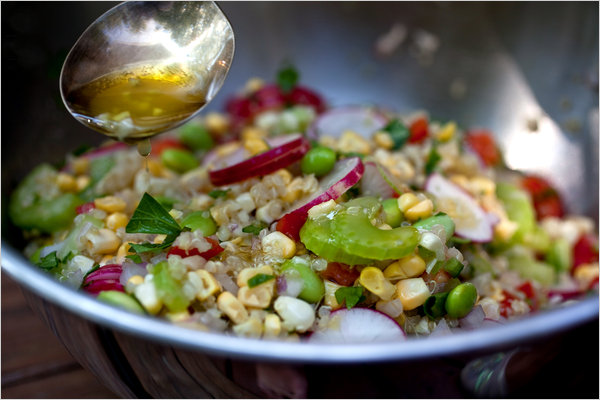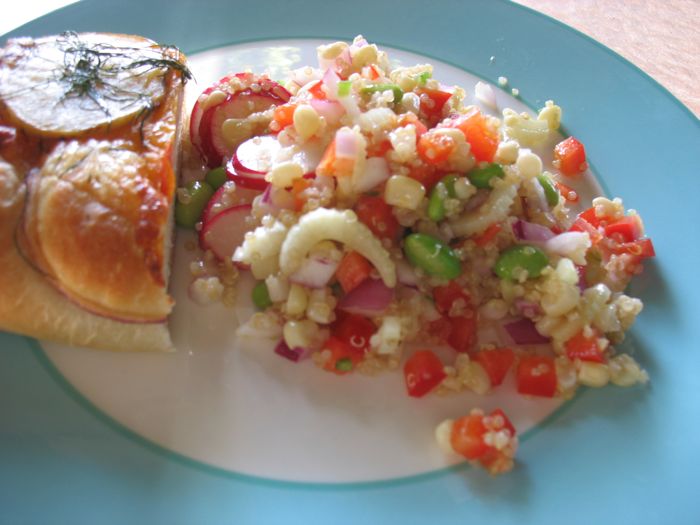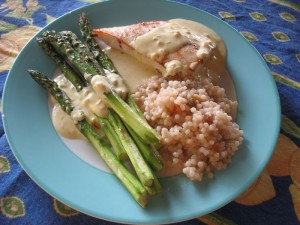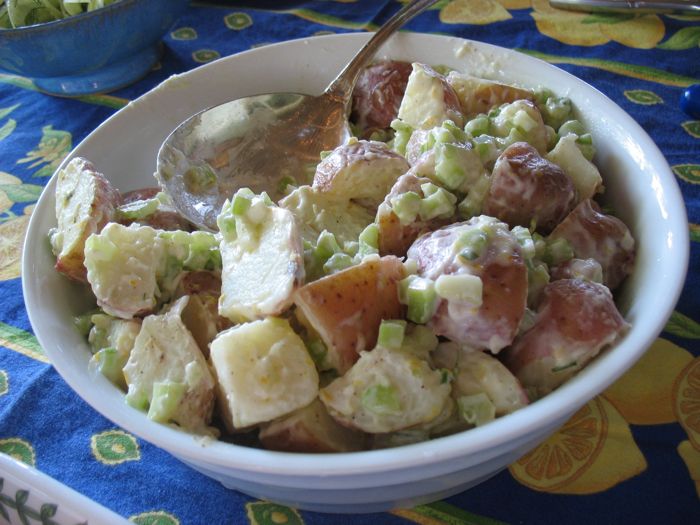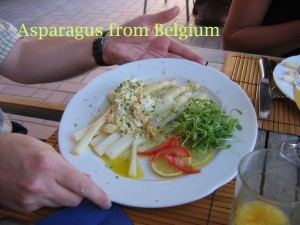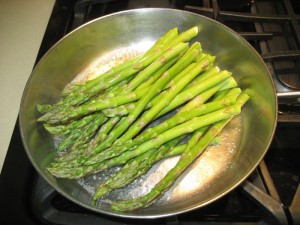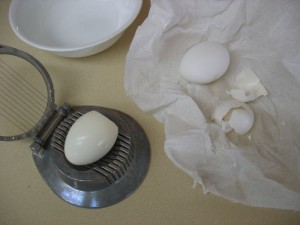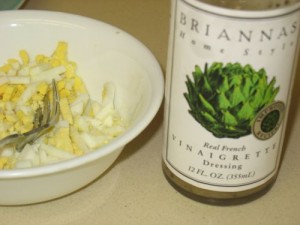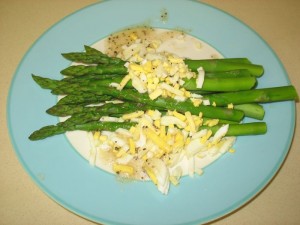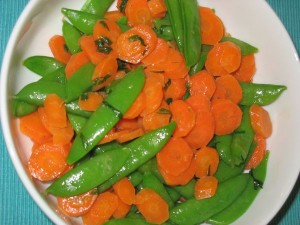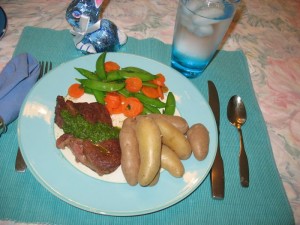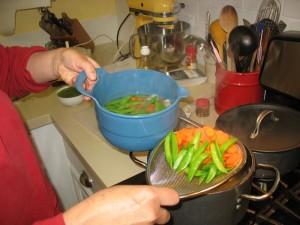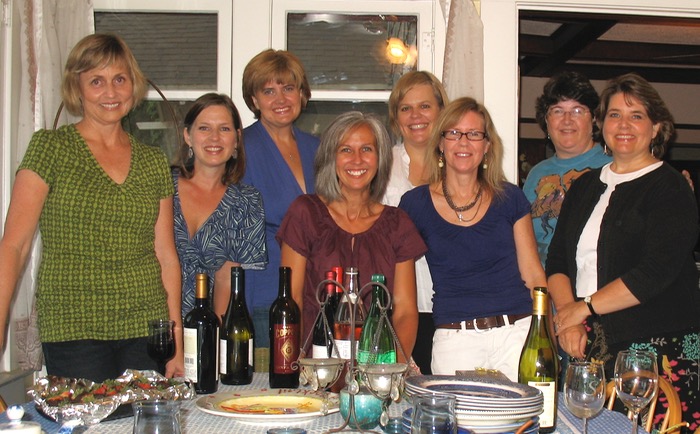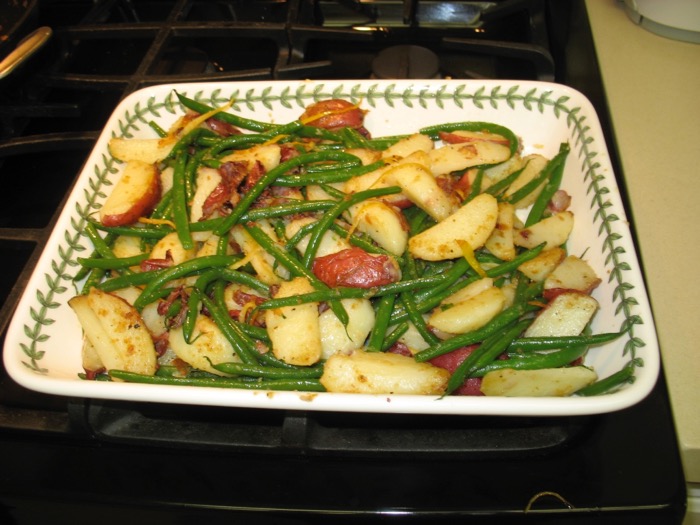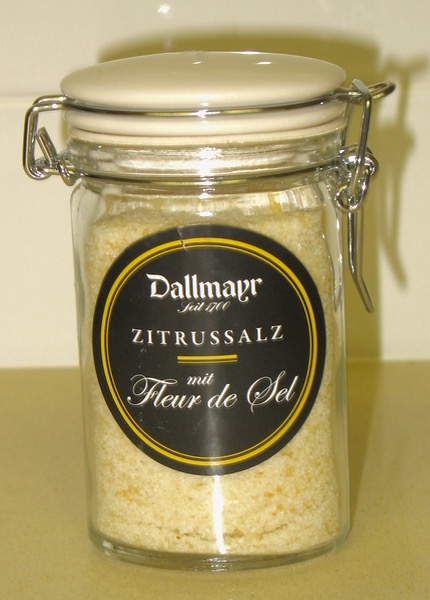I first read this recipe in the New York Times, in a special article on summer salads with recipes by Martha Rose Shulman. I subjected Dave, my husband, to a series of these, and he declared this one to be a winner. It’s pretty–green and red–and crunchy, but not a wildly out of control crunch–just pleasant fresh vegetable munching. While this is a summer salad, I could also see it served as cold side dish at a holiday buffet, as the colors are so beautiful. Regarding the “optional” feta cheese: we tried it both ways–with and without. Adding the feta cheese brings a creaminess, a certain “mouth” satisfaction to the dish. I recommend it.
For the salad:
1 cup quinoa, cooked (I made it with chicken broth, but water works as well. Click **here** for basic quinoa cooking directions.)
1/2 of a 16-ounce bag of WHITE frozen corn
1 small red onion (about 1/3 cup), cut in small dice
1 red bell pepper, cut in small dice
1/2 cup thinly sliced celery, from the tender inner stalks
4 or 5 radishes, sliced
1/2 cup fresh or thawed frozen edamame
2 ounces mild feta, cut in small dice (about 1/2 cup), or crumbled. I buy the bricks, then crumble it.
1/2 jalapeño chile, seeds and membranes removed, minced finely
1/3 cup chopped cilantro
For the dressing:
2 tablespoons fresh lime juice (about 1 small lime, depending on size)
1 garlic clove, finely minced or pureed
1/4 cup extra virgin olive oil
Salt to taste
Soak the onion in cold water to cover for five minutes. Drain, rinse and drain on paper towels. **I have no idea why this step is here, but I did it. Must be some kitchen chemistry.
Combine all the salad ingredients in a large bowl. Whisk together the dressing ingredients and toss with the salad. Serve.
Yield: Serves four main dish, and six side dish servings.
Advance preparation: The quinoa freezes well and the assembled salad will keep for a day in the refrigerator.
Here’s our version. I served it with a delicious foccacia from the local bakery, which was topped with tomatoes, potatoes and dill. We were full after our meal, and our leftovers the next day were even better.
Nutritional information per serving (four servings): 359 calories; 18 grams fat; 2 grams saturated fat; 0 milligrams cholesterol; 43 grams carbohydrates; 6 grams dietary fiber; 25 milligrams sodium (does not include salt added during cooking); 10 grams protein
